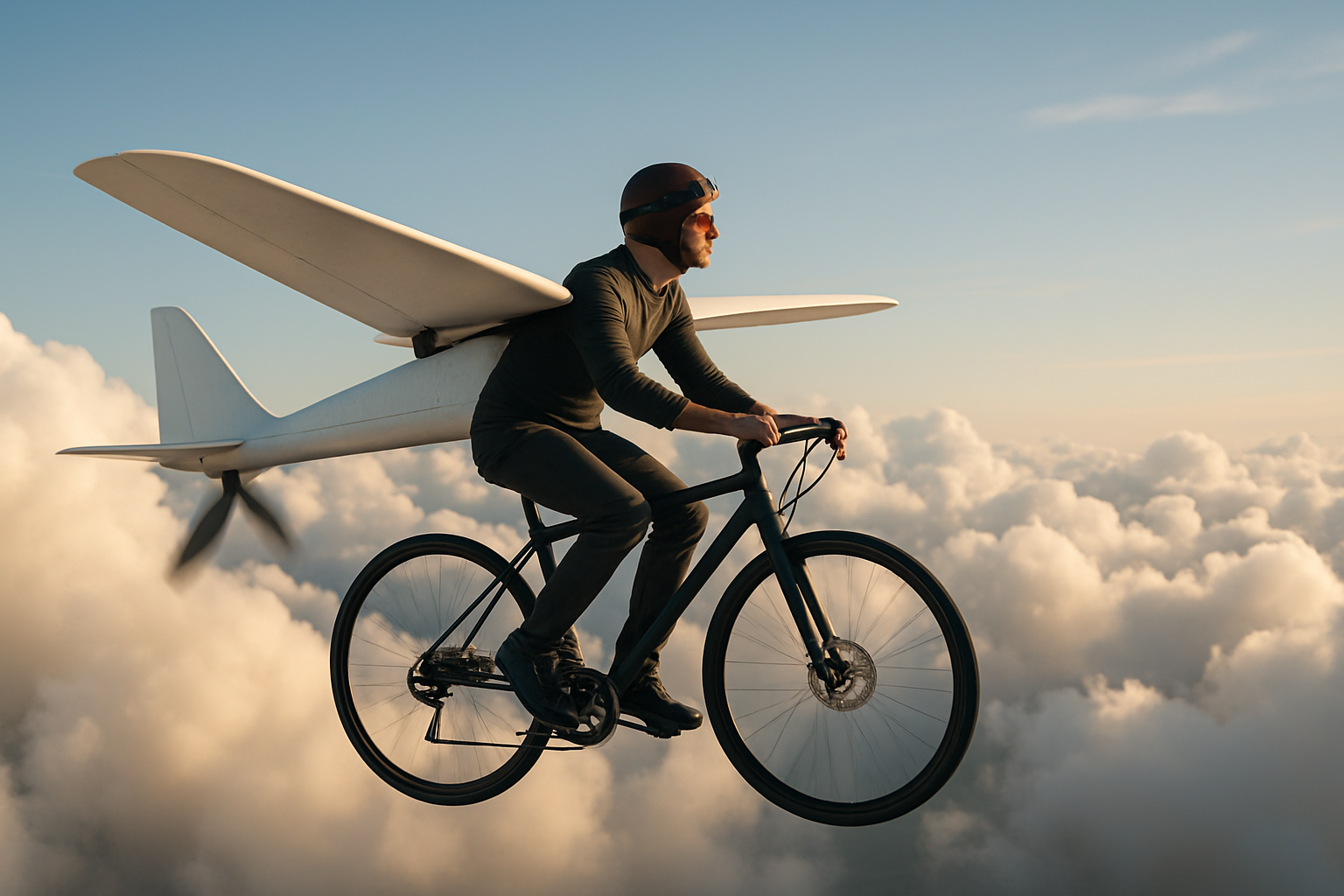Skycycle Revolution: Pedaling Through the Clouds
In a world where innovation constantly pushes the boundaries of travel, a new phenomenon is taking flight: skycycling. This audacious blend of cycling and aviation is captivating thrill-seekers and redefining the concept of aerial exploration. Imagine pedaling through the clouds, feeling the wind on your face as you navigate the skies with nothing but your own strength and a specialized aircraft. Skycycling is not just a futuristic fantasy; it's an emerging reality that's set to transform our perspective on adventure travel.

Engineering Marvels: The Anatomy of a Skycycle
Modern skycycles are marvels of engineering, blending lightweight materials with aerodynamic design. Typically constructed from carbon fiber and advanced composites, these aerial bicycles feature wingspan ranging from 20 to 30 meters. The pilot sits in a recumbent position, encased in a streamlined fairing to minimize drag. Propulsion comes from pedaling, which drives a large propeller, usually mounted behind the pilot. Sophisticated control systems allow for steering and altitude adjustments, ensuring a stable and maneuverable flight experience.
The Skycycling Experience
Skycycling offers a unique blend of physical exertion and aerial freedom. Pilots describe the sensation as surreal – the quiet hum of the propeller, the panoramic views, and the sheer exhilaration of self-powered flight create an unparalleled experience. Flights typically last between 30 minutes to an hour, covering distances of several kilometers. The altitude reached depends on various factors, including the pilot’s strength and weather conditions, but heights of 100 to 300 meters are common.
Training and Safety: Preparing for Takeoff
Becoming a skycyclist requires dedication and comprehensive training. Aspiring pilots undergo rigorous physical conditioning to build the stamina needed for sustained flight. Technical training covers aerodynamics, weather interpretation, and emergency procedures. Safety is paramount in skycycling. Pilots wear specialized gear, including helmets and parachutes. Many skycycles are equipped with backup power systems and advanced navigation tools to ensure safe flights.
Environmental Impact and Sustainability
One of the most compelling aspects of skycycling is its minimal environmental footprint. These human-powered aircraft produce zero emissions during flight, making them an eco-friendly alternative for aerial sightseeing and short-distance travel. The growing interest in skycycling aligns with the global shift towards sustainable transportation and eco-conscious tourism.
Skycycling Insights: Elevating Your Knowledge
• The current world record for human-powered flight distance stands at 115.11 kilometers, set in 1988 by the MIT Daedalus aircraft
• Skycycles can reach speeds of up to 45 km/h in ideal conditions
• The lightest skycycles weigh less than 30 kilograms
• Some skycycle designs incorporate solar panels to power onboard electronics
• Skycycling events and competitions are emerging, with plans for international races in the near future
The Future of Sky-High Adventures
As technology advances and public interest grows, skycycling is poised to soar to new heights. Researchers are exploring ways to increase flight duration and efficiency, potentially opening up longer routes and even multi-day aerial expeditions. The integration of artificial intelligence for navigation and safety systems could make skycycling more accessible to a broader audience. As this innovative form of travel evolves, it promises to offer a unique perspective on our world, blending the simplicity of cycling with the wonder of flight in a truly transformative adventure.





